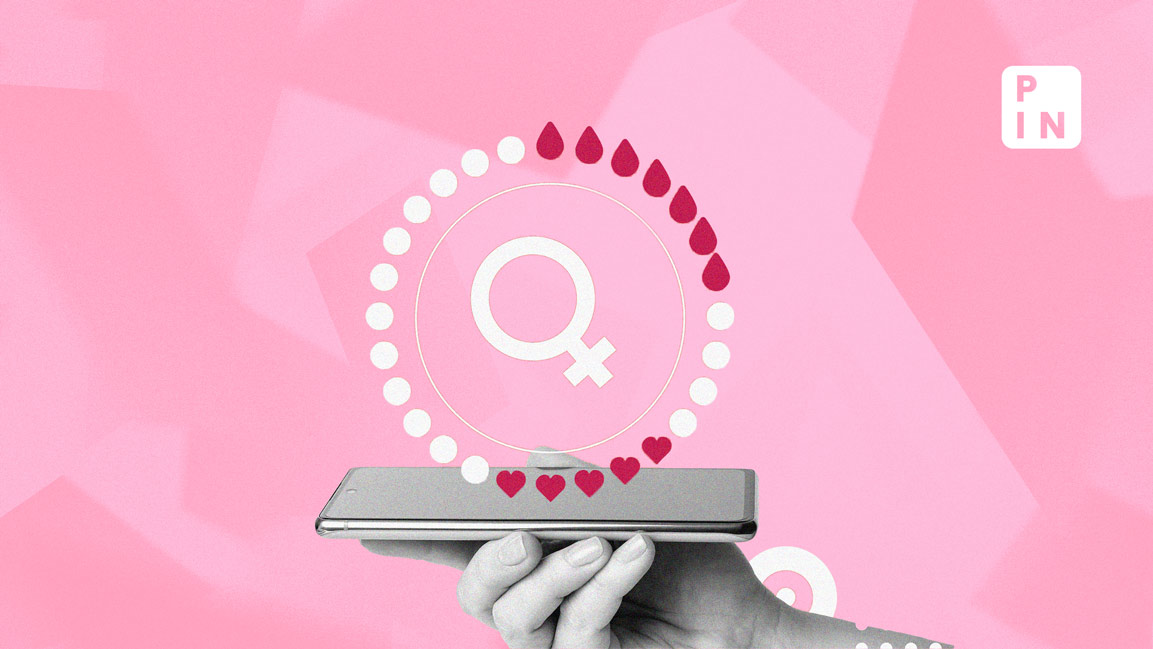- | 5:09 pm
Booming femtech a silver lining in India’s gender healthcare disparity
The growth in the femtech industry in India represents an encouraging trend as women are likely to use a femtech product that can be used in the privacy of their homes and offers them discretion and confidentiality

Since her diagnosis of polycystic ovary disease (PCOD) about 10 years ago, the quest for holistic solutions for symptom relief often led Protiti to disappointment. However, that changed one day when she came across an advertisement for a wellness platform that guaranteed “friendly and non-judgmental gynecologists”. “I think that was the main thing that appealed to me,” says Protiti, who did not want to disclose her last name.
The 27-year-old MBA student recalls how she could easily share her problems with approachable gynecologists, who also took the time to explain the science behind PCOD. In addition to prescribing blood tests, the experts provided her with a diet and exercise chart to help with her symptoms.
On the other hand, another woman, who sought to remain anonymous, found the platform expensive, and doctor consultations rushed. Nevertheless, she acknowledges the benefits of other healthcare technologies. The 33-year-old schoolteacher uses an app that indicates whether the menstrual cycle-related symptoms she tracks are normal or whether a doctor’s consultation is necessary. The app also offers chatbots that provide relevant articles to read. “That has been very helpful,” she says.
Femtech platforms like the ones used by the two women are gaining popularity.
Ida Tin, the founder of period and ovulation tracking app Clue, coined the term “femtech” to describe technology and innovation aimed at addressing health issues that primarily or disproportionately affect women. Other than consultation platforms and period tracking, femtech firms offer diagnostics, software, and products that leverage technology to focus on women’s health.
The femtech scenario in India
The World Health Organization (WHO) notes that gender inequalities often create greater barriers for women in accessing health information and services. These barriers include restrictions on mobility, limited decision-making agency, inadequate access to financial resources, and medical misogyny.
These challenges are further compounded by socio-economic factors in countries like India, where topics related to female reproductive health are stigmatized. Furthermore, significant disparities between men and women in terms of education, equal pay, and labor force participation influence gender-specific health vulnerabilities.
In the World Economic Forum’s Gender Gap Report 2022, India was ranked last, indicating that Indian women are more likely to face barriers to healthcare access.
Given this context, the growth in the femtech industry in India represents an encouraging trend. Over 5% of the world’s femtech companies are in India, and industry lobby Federation of Indian Chambers of Commerce and Industries (Ficci) predicts that the Indian femtech market will grow to reach $4 billion by 2024.
Gytree, a virtual health and wellness platform, recently made headlines for raising significant funding. Shaili Chopra founded Gytree to overcome gaps in accessibility to women’s health-related information and resources. The platform combines telehealth visits, vetted educational content, and complementary wellness products for a range of women’s health issues, from menstruation to menopause, all easily accessible to women. “Such virtual clinics are breaking down inequalities in women’s health,” Chopra says, “by offering them virtual care in the comfort of their home.”
Sanobar Syed, a pharmaceutical business strategy and forecasting expert, argues that women are likely to use a femtech product that can be used in the privacy of their homes and offers them discretion and confidentiality since Indian women are largely still not open to discussing their reproductive health issues.
Accessibility question
Gytree has served over 35,000 women in tier 1, 2, and 3 cities. Chopra believes that providing people with information is the right way to help them access solutions.
“For women who cannot afford Gytree, they can interact with our chatbot – Doctor Didi – free of charge,” says Chopra. The chatbot can answer basic questions about women’s bodies, sexual health, maternity, periods, and more.
Historically, women’s health issues have been under-researched and underfunded, says Dr Czuee Morey, a biomedical scientist and entrepreneur who is developing a non-invasive, machine learning-based solution for diagnosing endometriosis through imaging.
Even new technologies such as artificial intelligence for healthcare are not free of gender biases, she argues. “So far, there are AI-integrative solutions, but they are not really focusing on the female organs yet. We are mapping the pelvic area, especially for women, which has not really been done before.”
Having personally suffered from endometriosis, she understands the need for a non-invasive diagnostic tool. She believes that her product, and femtech in general, can make a big difference. The solution she is developing will help doctors detect endometriosis sooner, assess the disease’s severity, and plan surgery. Her team is collaborating with clinics and imaging centers throughout India. Such technology could help diagnose endometriosis early, a process that currently takes an average of 6-7 years. One major reason for the delay is that the gold standard for diagnosis is laparoscopic surgery, which is invasive and expensive.
Dr Morey acknowledges that making a diagnostic tool affordable for people from all socio-economic backgrounds is a challenging problem to solve. However, she believes that as technology develops, costs will decrease. She highlights that diagnostic machines like ultrasounds and MRIs are becoming more accessible and cheaper.
Applicability potential
Dr Morey asserts that access to healthcare information is going to reduce the information asymmetry between doctors and patients. This will empower patients to make decisions about their own care and be more than just silent observers. However, she warns that there could be potential drawbacks, such as over-reliance on technology and accepting information without double-checking.
Dr Supriya Kamath, a gynecologist, agrees that people depending too much on femtech without consulting a doctor when needed could lead to “catastrophes,” since many aspects of human physiology are still beyond computers.
Nevertheless, Dr Kamath acknowledges that femtech solutions are convenient since most gynecological diagnoses rely on when the patient last menstruated, which women often cannot recall. Period tracking apps solve this problem. In addition to period tracking, she has encountered useful apps that can calculate the gestational age of a pregnancy and even count the baby’s movement during pregnancy.
Dr Ananya Petkar, an independent gynecologist and former faculty member at Mumbai’s KEM Hospital, agrees that femtech solutions have improved health awareness in women, who often neglect their cycles due to their household and career responsibilities. Femtech platforms are fairly easy to use – women can simply input information such as their period date, pain, mood, and energy levels. The app uses this data to predict the next period and fertile window and identify cycle changes that may indicate potential health issues.
Pregnancy tracking apps require the user to enter the delivery due date and provide personalized articles and videos with relevant information. Apps that monitor baby movement during pregnancy help the user record how long it takes for the baby to reach milestones like 10 kicks or 20 kicks and track changes over time.
Some apps also offer information after birth, helping the users navigate parenting.
Challenges for femtech
The biggest challenges for the femtech industry in India, Syed argues, are to increase awareness among women and to protect their data privacy. A third factor, she says, is access. “Although smartphone and internet availability has increased exponentially, how many women are actually accessing it?” she asks.
Indeed, a study by Global System for Mobile Communications Association (GSMA) about digital access for men and women in different countries highlights that women in low- and middle-income countries are less likely to use mobile internet than men.
GSMA has been tracking the mobile internet gender gap across low- and middle-income countries since 2017. They reported that only about 31% of Indian women, compared to 52% men, used mobile internet in 2022.
Dr Morey points out that without access to digital technology, reaching women with information, which is the first step in women’s healthcare, becomes difficult.
Dr Petkar agrees that both the lack of access and awareness pose a challenge to women’s health despite the popularity of femtech. Although some apps provide vernacular language options, she hasn’t encountered women from rural backgrounds using these, which she believes also stems from their indifference to health concerns. “These women very rarely consider their health concerns a priority,” she says.
Chopra also recognizes that Indian women often neglect their health and only consult a doctor when something is seriously wrong. She emphasizes the need to change this mindset by creating awareness about health problems among women and ensuring that healthcare solutions are accessible and available to them. These are crucial steps. “As we solve for awareness, access, and availability, let’s use technology to our favor,” she concludes.













